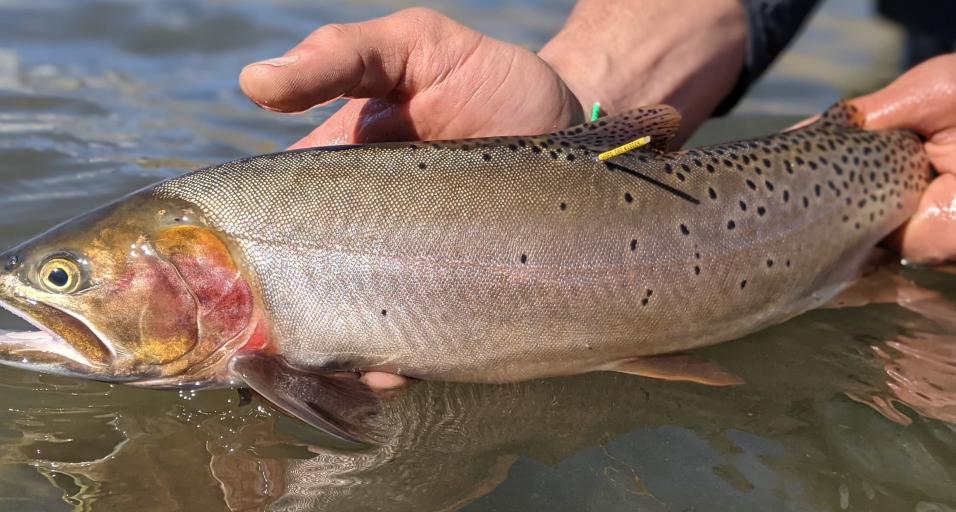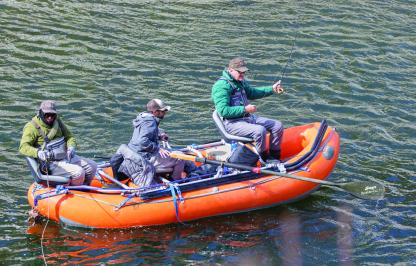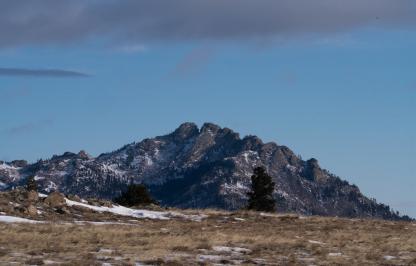CODY- The Wyoming Game and Fish Department recently completed a four-year study to better understand seasonal distribution of trout and angler harvest in the North Fork of the Shoshone River and Buffalo Bill Reservoir west of Cody.
The objective was to provide fisheries managers with data to evaluate long-standing seasonal closures specific to this fishery. Now that this research has concluded, fishery managers will gather input from local anglers. In addition, Game and Fish will host an informational meeting at 6 p.m. Sept. 11 at the Shreve Lodge at Buffalo Bill State Park for members of the public interested in learning about the results of the study.
“As fisheries managers, we want to take a comprehensive approach to managing this unique fishery,” said Sam Hochhalter, Game and Fish fisheries supervisor in the Cody Region. “This means collecting the biological data necessary to understand the dynamics of the fish population and the social data from anglers on their preferences for future fishing opportunities, which will be done in part through an email survey this fall.”
The North Fork of the Shoshone River and Buffalo Bill Reservoir supports self-sustaining wild rainbow and Yellowstone cutthroat trout. No stocking occurs to supplement populations. These highly migratory, wild trout spend the winter months in Buffalo Bill Reservoir and migrate into the North Fork of the Shoshone River and all 26 of its major tributaries to spawn in the spring and early-summer months. After spawning, some spend the summer in the North Fork, others quickly return to the reservoir.
A seasonal closure of some form has been in place since 1884, and was a part of the oldest seasonal closures in Wyoming’s history that spanned the entire state. Current regulations on this fishery include a seasonal closure from April 1-June 30 of the lower portion of the North Fork and on a small portion of the reservoir from April 1-July 14.
The study found that regardless of the time of year, the number of trout within the closed section of the North Fork was approximately two times greater than the number of trout upstream of the closure, and trout abundance was by far the highest in the closed section during the closed time period.
“These data indicate that the seasonal closure prevents anglers from fishing the section of the North Fork with the highest abundance of trout during the time of year that abundance is highest,” Hochhalter said.
The study also found angler harvest to be fairly high for a wild trout population. Across four years of the study, approximately half of the annual harvest occurred in the river portion, and half in the reservoir portion. “While annual harvest and catch-and-release related mortality was high, it is sustainable,” Hochhalter said.
The study indicates the dates of the seasonal fishing closure on the North Fork Shoshone River could be shortened, allowing anglers more days to fish the closed section, but daily bag limits and potential terminal tackle restrictions would be necessary to prevent increased mortality.
“The bottom line is the current regulations provide a sustainable fishery, as would a host of alternative regulations that wouldn’t increase harvest or catch-and-release mortality,” Hochhalter said. “We want to provide this information to anglers and let them weigh in as we prepare for the next regulation cycle in early 2025.”



